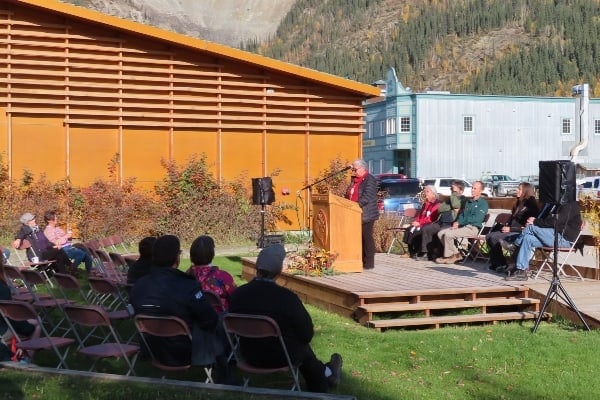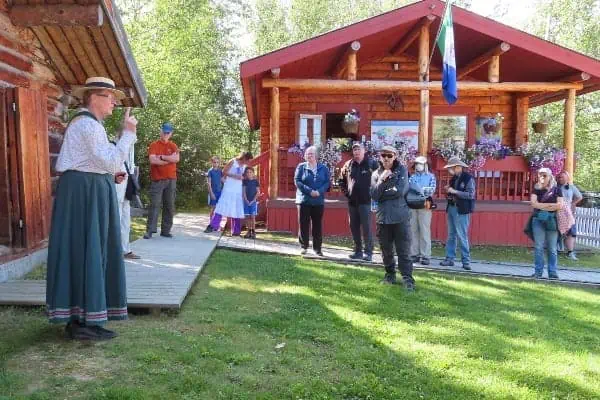Of the five writers who have attracted folks to come and visit buildings and gravesites in the Klondike, that are attached to their names, Jack London was the first, having been one of the tens of thousands of men (mostly) and women (fewer) who scaled the Chilkoot and sailed across Lake Bennett on into the Yukon River and north to the Klondike in 1898.
Despite various writings where people claim to have met Robert Service on the same gold-rush trek, the Bard of the Yukon was in California when the Klondike Gold Rush took place, and only made it to the Yukon by train, no less, in 1905, long after the heyday of the stampeders.
In fact, he only got to Dawson in 1908, by which time he had already surprised himself by writing a best-selling volume of verse, one poem of which, “The Call of the Wild,” borrowed a title from London’s 1903 novel.
By that time, London had already written the first version of his most famous short story, “To Build a Fire” (published in 1902 in the magazine, Youth’s Companion). In this tale, a man braves a solo trek to his cabin, in the midst of a Yukon winter, and barely manages to survive the journey.
London may have pulled his punches for the boys’ magazine, as he later revisited the story, took away the man’s name, added a dog that knew more about survival than his master and walked him to a chilly end at minus 70° F. This is the more-famous version, published in Century Magazine in 1908 and later reprinted in the 1910 collection, Lost Face.
That’s the one that a baker’s dozen of us, locals and folks from as far away as Australia, as well as a couple on a cycling tour, settled down to take turns reading aloud on the evening of June 19, sitting in front of the cabin now located in Jack London Square, next to the Jack London Museum, which is owned and operated by the Klondike Visitors Association.
The museum is based on the scholarship and research of the late Dick North, a journalist whose books The Mad Tapper and The Lost Patrol have their own fans, and who described his lifelong fascination with London in his own final book, a memoir called Sailor on Snowshoes.
The evening was organized by the KVA, and marketing manager Paul Robitaille described it as “a throwback to the way things used to be.”
Last year we took four hours to read through the entirety of The Call of the Wild. At just over 7,100 words, “To Build a Fire” took us slightly over an hour to read, with each of those in attendance reading about two pages.
In the days before radio and television took over our evenings, public readings by authors were much more common than they are today. Dawson benefits from at least four Berton House readings annually, and other authors are occasionally drawn here by the Klondike’s mystique. There were two evenings of readings at June’s Dawson Daily News Print & Publishing Festival.
You can visit the Jack London Museum between 1 and 5 p.m. from May to September, hear accounts of his life and works and learn how Dick North relocated the cabin, as well as why only half of it is in Dawson now. But there probably won’t be another reading relay until next June.





